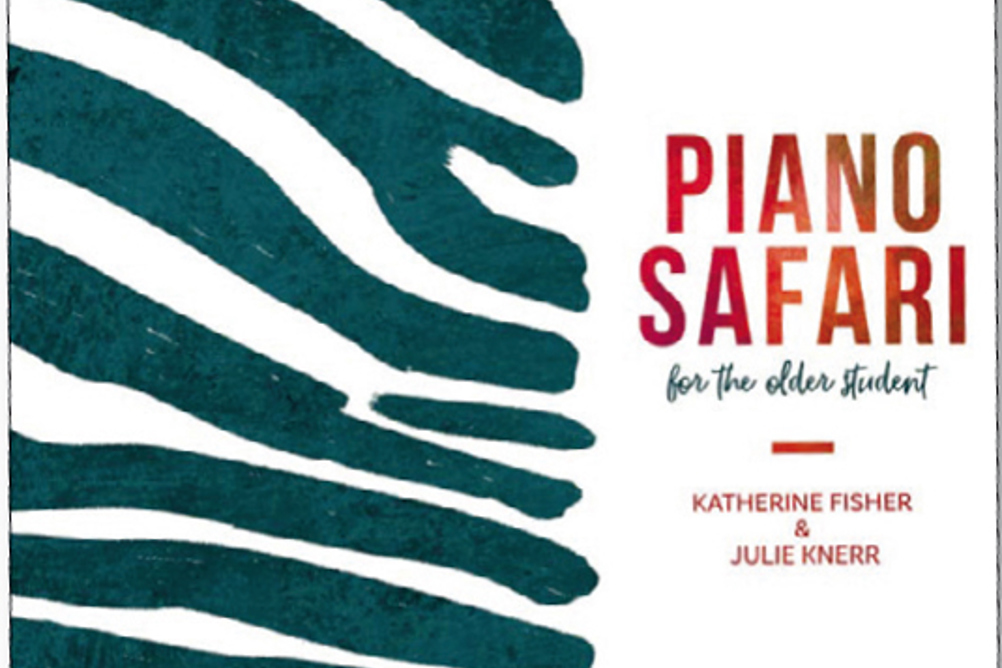.

This volume comes as a companion to Piano Safari for the Older Student: Repertoire & Technique, which I reviewed in November 2024’s issue of Music Teacher, and is aimed at beginner pianists from age 10 upwards, including teens and adults. It is Level 1 of a two-part series that follows three levels of books designed for under 10-year-olds. Piano Safari is a well thought-out and thorough method from US piano pedagogues Katherine Fisher and Julie Knerr, with extensive back-up material and resources provided on the website: pianosafari.com. Although elements of theory and reading are included in the Repertoire & Technique book, this volume offers a substantial quantity of supplemental material.
Basic phrase shapes
The content is presented in five carefully graded units interleaving theory and sight-reading, highlighting the connections between them. Unit 1 begins by familiarising the student with black and white keys, note values and syllabic counting (ta, tati). The sight-reading exercises that follow use pre-stave reading, showing phrase shapes without stave lines, indicating starting positions and fingerings and giving material for each hand separately. This offers a gentle start before stave reading is introduced in the next unit.
Introducing clefs and rhythm
Eight pages each of theory and reading comprise unit 2. All the basics are presented here: treble and bass clefs, lines and spaces, finding landmark notes C and G, time signatures, barlines, rests, intervals (melodic and harmonic). Although content heavy, it is very clearly set out and explained, with all concepts reinforced by analysis and writing exercises. Large print facilitates reading and writing, although perhaps less well-targeted for older teens. The unit concludes with students reading the same phrase hands together on the grand stave – a good idea to start early with reading hands together.
Early aural training
The following three units continue by systematically introducing further intervals, both melodic and harmonic, to be identified and then written. Useful tasks include copying short melodies onto treble and bass staves before playing, and choosing the starting finger, so encouraging independent thinking early in the learning process. Listening skills are a welcome introduction in unit 4, with melodic and harmonic intervals of 2nds and 3rds being identified by ear. A further new step is metric counting, using numbers rather than syllables.
By the end of unit 5, students are able to identify all pitches on both staves, recognise intervals and patterns, and read tunes of four bars’ length in five-finger position. Concepts of keys and key signatures, however, have not yet been introduced.
Summary
The volume clearly has many strengths: the overall approach is systematic and thorough, with all material presented very clearly. There is a certain amount of overlap with its companion Repertoire & Technique book, even to the extent of including technical reminders such as maintaining hand shape and stable finger joints in the sight-reading exercises, which would not normally be included in a sight-reading book.
The concept of connecting theory, listening and reading is welcome – they are too often taught as virtually unrelated subjects – as is the reinforcement of concepts learned, building understanding through close examination of musical detail.
There are frequent tips, such as the suggestion to read and play each melody three times before ticking the box to indicate completion of the task. The rhythm exercises to be tapped and counted at the bottom of each sight-reading page are useful, although they seem somewhat out of context in being unrelated to, and more complicated than, the notation above.
Along with these many positive points, I feel that that there is scope for more creativity in the way this book is presented. For instance, although students are given the opportunity to write rhythms, they might also enjoy writing their own (or familiar) melodies. Repeated ideas could be presented with more variety, and some graphics to break up the page might make it more interesting, even for older beginners.
There are aspects of the book that strike me as more appropriate for students younger than age 10, such as the large print, and the amount of repetition could get tedious for older teenagers who might want to skip a little.
Overall, in my experience youngsters who get excited by theory and sight-reading tend to be few and far between and, although I think it’s definitely a plus to combine these activities (and incorporate some aural exercises as well), I’m not convinced that the content of this volume would make them much more attractive, especially if used as a stand-alone book. It is probably best paired with its companion to give an enjoyable balance between activities.
The cost is £10.95 bought individually or £22.95 for the pack including the Repertoire & Technique book. This compares to £7.50 for the ABRSM’s Music Theory in Practice, Grade 1.
PIANO SAFARI: SIGHT-READING & THEORY FOR THE OLDER STUDENT, LEVEL 1
Katherine Fisher and Julie Knerr
£10.95




